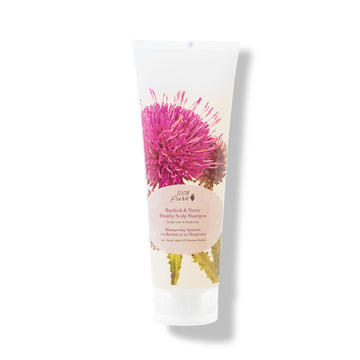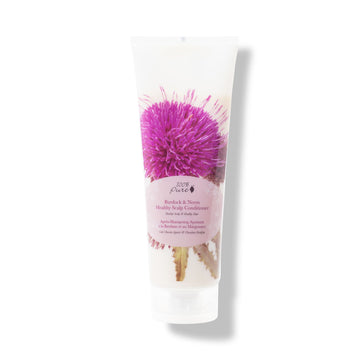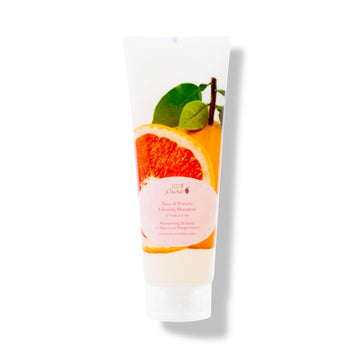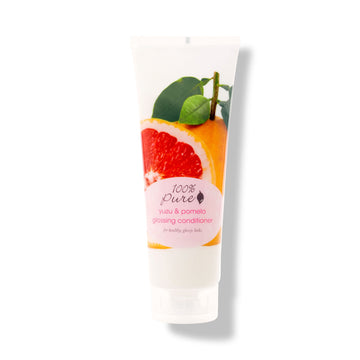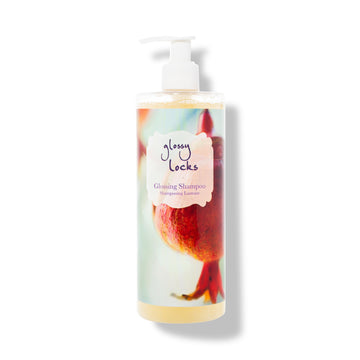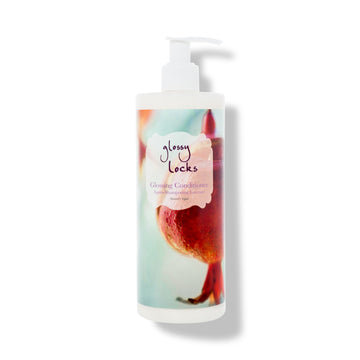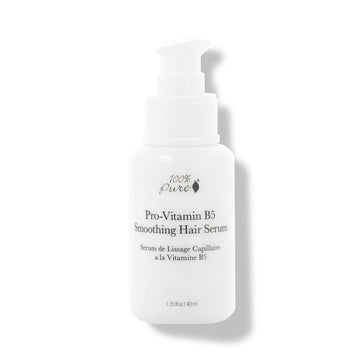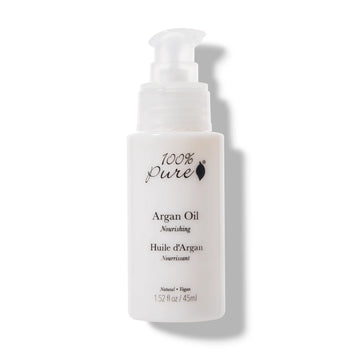Your Guide to Luxuriously Soft Locks Every Day
Written by: 100% PURE®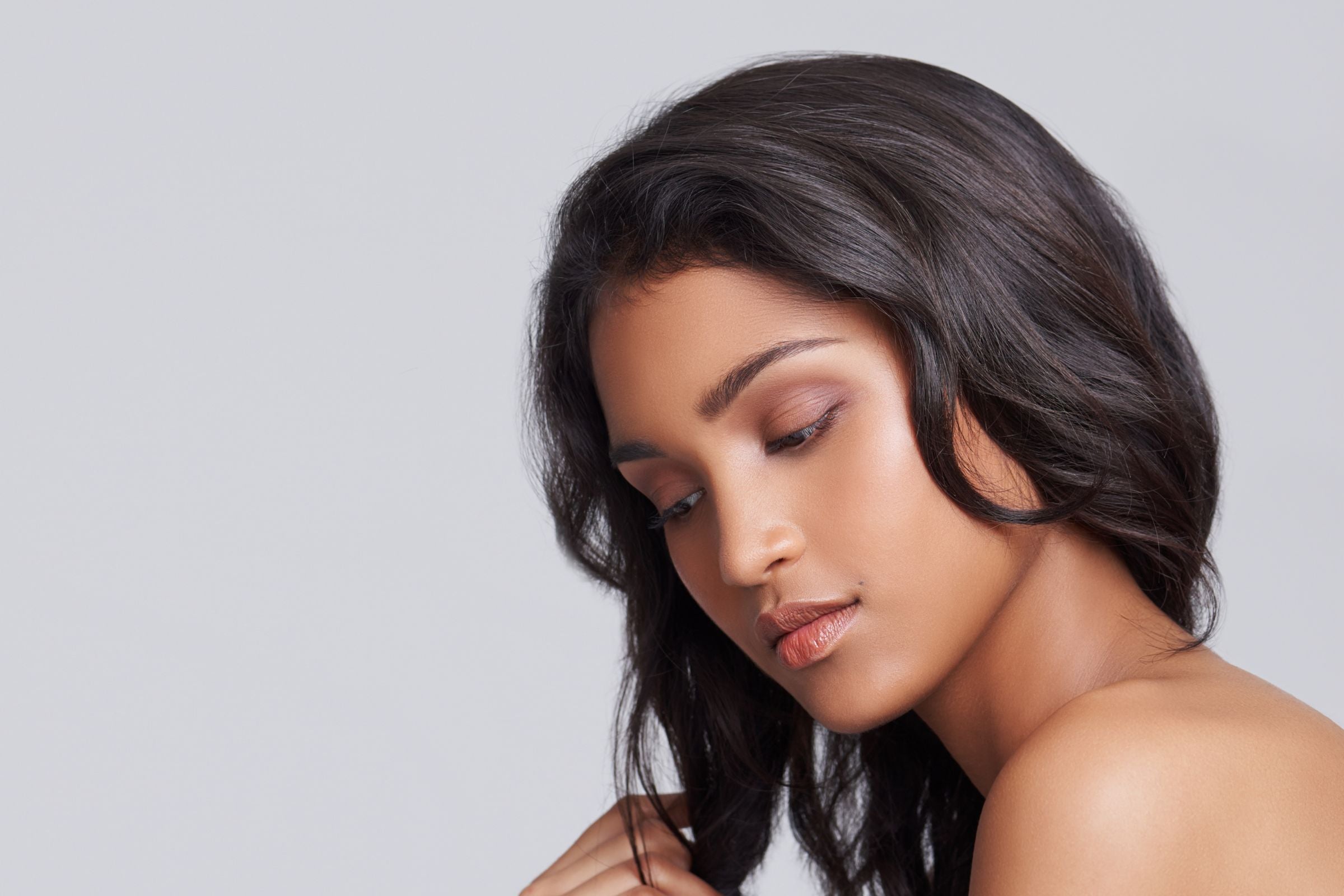
Alright, let's spill the tea on every girl's secret wish: that perfect, silky, smooth hair we see in shampoo ads. But, let's face it, the reality is like a plot twist in a not-so-fun movie. We're talking about a whole saga of hair problems.
Imagine dealing with frizz going rogue, split ends showing up uninvited, and knots making a mess. It's like our hair has a mind of its own, and it's not always on our side. So, let's talk about what are some effective steps one needs to take to get that dream hair transformation.
Ever wondered why your friend's hair routine doesn't work for you? It's all about understanding your hair type – the unique DNA that dictates how your locks behave. Learning about your hair type is crucial for properly caring for your hair and achieving desired styles. Hair types are typically classified based on texture, curl pattern, and other characteristics. The most widely used classification system is the Andre Walker Hair Typing System, which categorizes hair into four main types (Type 1 to Type 4), further divided into subtypes based on texture and curl pattern.
|
Hair Type |
Curl Pattern |
Strand Thickness |
Porosity |
Elasticity |
Characteristic |
|
Type 1 |
Straight |
1A (Fine) |
Low to High |
High
|
Reflects sheen, Resilient |
|
Type 2 |
Wavy |
2A-2C |
A (Fine) - C (Coarse) |
Low to High
|
Prone to frizz, Noticeable texture |
|
Type 3 |
Curly |
3A-3C |
A (Fine) - C (Coarse) |
Low to High |
Voluminous, Ranges from loose to tight curls
|
|
Type 4 |
Colly |
4A-4C |
A (Fine) - C (Coarse) |
Low to High |
Delicate, Requires moisture to prevent breakage
|
Different hair types have varying needs, and using products and methods tailored to your specific type can help achieve smoother, healthier hair. For example:
Straight Hair: Focus on maintaining shine and preventing oiliness.
Wavy Hair: Use products that enhance waves and control frizz.
Curly Hair: Moisture is key to maintaining curls and minimizing frizz.
Coily Hair: Deep conditioning and protective styling can help retain moisture and prevent breakage.
By identifying your hair type and understanding its unique characteristics, you can develop a personalized hair care routine that addresses your specific needs.
The frequency of washing plays a crucial role in maintaining hair texture. Overwashing strips the hair of its natural oils, leading to dryness, frizz, and potential breakage. On the other hand, under-washing allows oil and product buildup, causing a lack of volume, dullness, and potential scalp issues. Finding the right balance in washing frequency helps preserve the natural oils that contribute to smooth and healthy hair. Here are some hair-washing tips that need to be in your shower routine:
Frequency: Wash your hair according to its needs; typically, 2-3 times a week is recommended.
Water Temperature: Use lukewarm water to open the hair cuticles for cleansing and close them for conditioning.
Shampoo Application: Focus on the scalp, using a gentle massage, and let the suds cleanse the rest of the hair when rinsing.
Conditioner Application: Apply from mid-length to ends, avoiding the scalp, and leave it on for a few minutes before rinsing.
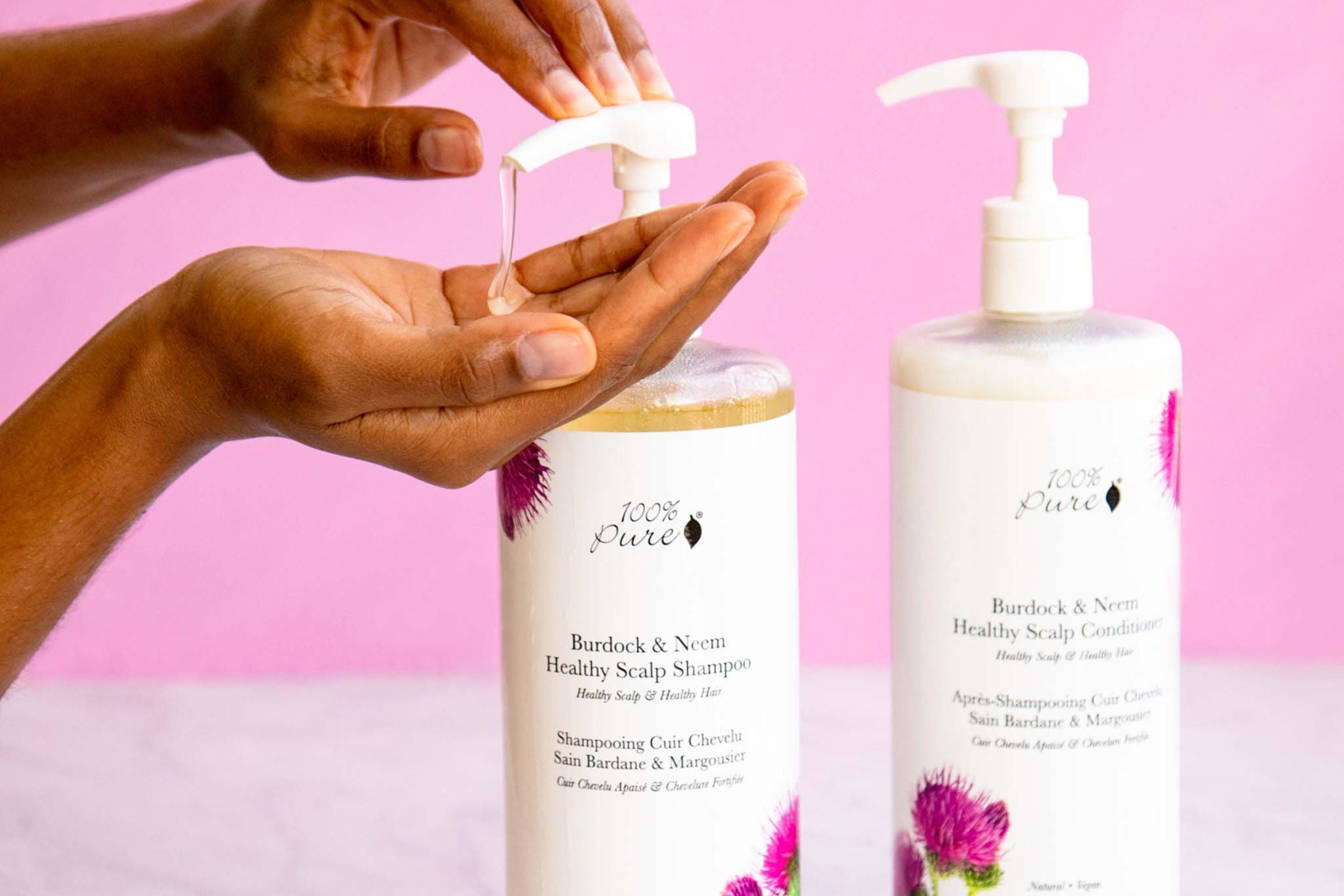
Burdock and Neem Healthy Scalp Shampoo & Burdock and Neem Healthy Scalp Conditioner
Crafted by 100% Pure, the Burdock and Neem Healthy Scalp Shampoo and Conditioner boasts a blend of natural ingredients. The shampoo, enriched with burdock root and neem, promotes a healthy scalp by harnessing neem's antibacterial properties. Burdock root, rich in essential nutrients, nourishes the hair for added strength and vitality. The accompanying conditioner complements this with moisture retention and detangling benefits. Together, they create a powerful duo for maintaining scalp health and ensuring smooth, manageable hair.
Yuzu and Pomelo Glossing Shampoo & Yuzu and Pomelo Glossing Conditioner
The Yuzu and Pomelo Glossing Shampoo and Conditioner from 100% Pure offer a refreshing twist to hair care. Bursting with the citrus goodness of yuzu and pomelo, these products enhance shine and vibrancy. Yuzu, rich in vitamin C, adds a revitalizing touch, while pomelo provides antioxidants for overall hair well-being. This dynamic duo not only cleanses without stripping natural oils but also leaves hair with a glossy finish. The delightful combination of these standout ingredients makes them ideal for those seeking radiant, lustrous locks.
Glossy Locks Glossing Shampoo & Glossy Locks Glossing Conditioner
For those yearning for glossy, radiant hair, 100% Pure Glossy Locks Glossing Shampoo and Conditioner presents a tailored solution. Formulated with aloe vera to moisturize and honey for added shine, this duo leaves hair feeling soft and looking luminous. Aloe vera's hydrating properties nourish both hair and scalp, while honey enhances shine and locks in moisture. Together, they create a luxurious experience that promotes glossy, healthy locks. Elevate your hair care routine with these products, delivering a perfect balance of hydration and radiance.
Efficient drying is key to smooth styling. Begin by gently towel-drying hair, avoiding harsh rubbing that can cause frizz. For blow-drying, use a heat protectant spray and start with a lower heat setting. Divide your hair into sections, focusing on one at a time, and use a round brush for smooth results.
Shielding your hair from heat damage is essential. Heat-protectant products create a barrier, minimizing the impact of styling tools. Apply evenly before using heat tools to prevent moisture loss and breakage. They are crucial for maintaining hair health, especially for those who regularly use blow dryers or straighteners.
Adding these products into your styling routine to achieve a flawless look without compromising hair health:
1. Pro-Vitamin B5 Smoothing Hair Serum
Benefits: Adds shine, reduces frizz, and promotes smoothness.
How to Use: Apply a small amount to damp or dry hair, focusing on the ends. Comb through for even distribution. Can be used before styling or as a finishing touch.
2. Argan Oil
Benefits: Hydrates, tames frizz, and adds a healthy shine.
How to Use: Apply a few drops to damp hair, distributing evenly. Can be used as a pre-styling treatment or on dry hair for a polished finish.
Regular deep conditioning treatments offer a plethora of benefits, revitalizing and nourishing the hair. Deep conditioning enhances moisture retention, improves elasticity, and reduces frizz, resulting in smoother, healthier strands. DIY natural hair mask recipes provide an affordable and chemical-free option.
|
Hair Types |
Ingredients |
Recipe |
|
All Types |
Avocado, Olive Oil, Honey |
Mash half an avocado, and mix with 1 tbsp each of olive oil and honey. Apply to damp hair, leave for 30 mins, then rinse. |
|
Curly |
Coconut Milk, Aloe Vera Gel, Jojoba Oil |
Mix equal parts coconut milk and aloe vera gel, and add a few drops of jojoba oil. Apply to damp curls, leave for 30 mins, then rinse.
|
|
Fine |
Egg Whites, Lemon Juice, Olive Oil |
Whisk 2 egg whites with 1 tbsp of lemon juice and 1 tsp of olive oil. Apply to damp hair, leave for 15 mins, then rinse. |
|
Coily |
Shea Butter, Castor Oil, Honey |
Melt 2 tbsp of shea butter, add 1 tbsp each of castor oil and honey. Apply to damp coily hair, leave for 30 mins, then rinse. |
Choosing the right hair mask ensures that your hair receives the specific nourishment it needs based on its type and condition. Adjust the ingredients and ratios according to your hair's preferences and enjoy the benefits of a personalized, natural hair treatment.
Newsletter Subscribe
for more blog updates and exclusive discounts
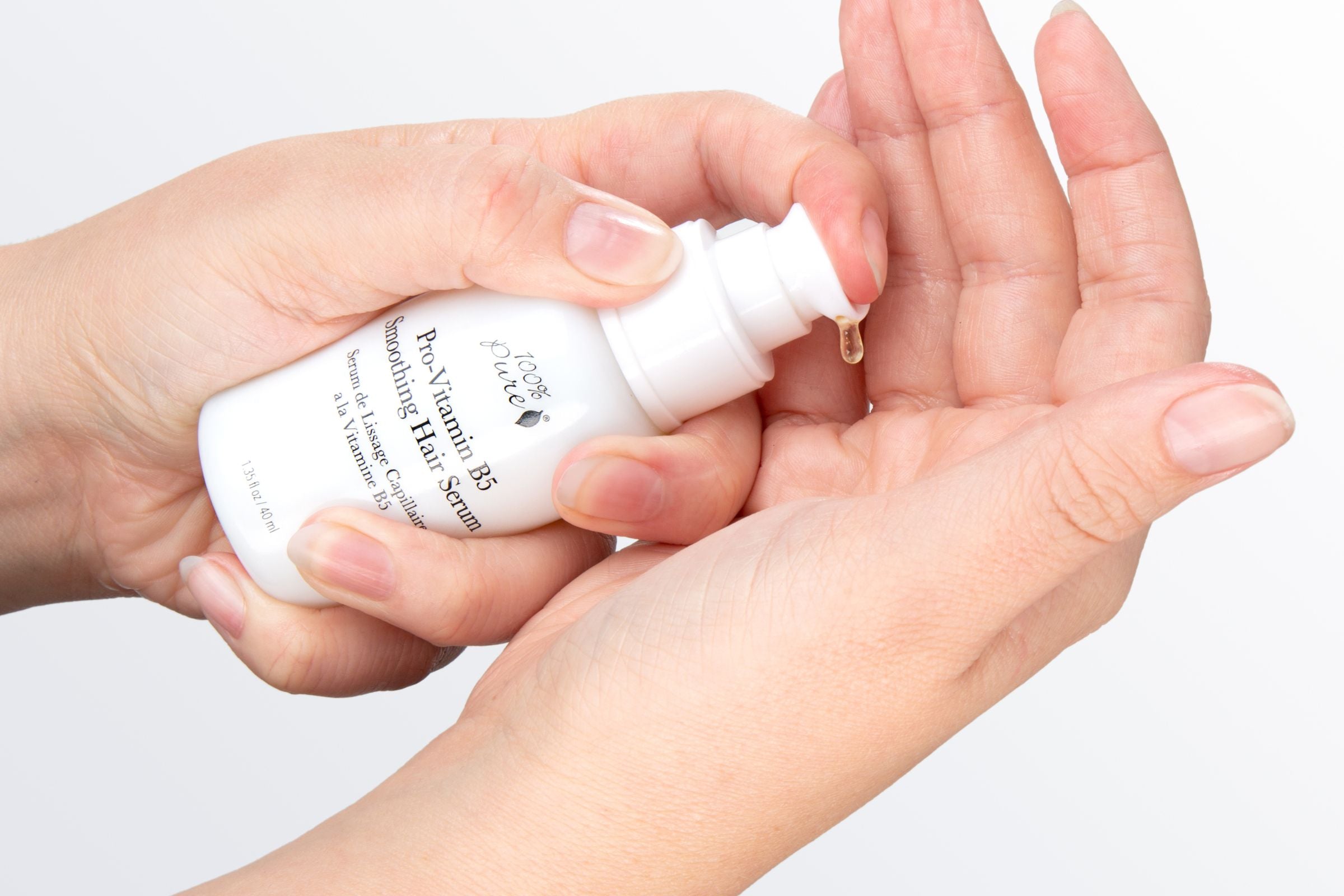
Long-term hair health relies on daily habits, diet, and maintenance practices. Always gently detangle your hair with a wide-tooth comb. Also use silk or satin pillowcases that will minimize breakage and frizziness. The role of diet and hydration is crucial, emphasizing a protein-rich diet for strength, omega-3 fatty acids for scalp health, and adequate water intake to prevent dryness.
Knowing when to trim and how often is equally essential. Scheduling trims every 8-12 weeks helps prevent split ends and maintains overall hair health. By adopting these long-term habits, you can foster strong, smooth, and healthy hair.
How can I smooth my hair without heat?
You can achieve smooth hair without heat by using methods like air-drying, braiding, or applying leave-in conditioners. These alternatives reduce damage and promote natural texture.
What can I do about frizz in humid weather?
You can tame frizz in humid conditions by using anti-frizz products, such as serums or creams. Opt for hairstyles that work with the natural texture to minimize frizz and maintain a polished look.
Are there any natural remedies for smoother hair?
Incorporate natural remedies like coconut oil, aloe vera, or apple cider vinegar to enhance hair texture and promote smoothness. These ingredients can be applied as masks or rinses for nourished, sleek hair.
How often should I use a hair mask?
Use a hair mask once a week to deeply condition and repair damaged strands. Adjust the frequency based on your hair's needs, ensuring a balance between moisture and protein treatments for optimal health.
Can I still achieve smooth hair if I color-treat it?
Yes, you can achieve smooth hair even after color treatment. Opt for sulfate-free, color-safe products to maintain vibrancy and reduce damage. Deep-conditioning treatments, such as masks and leave-ins, help restore moisture and keep the hair smooth.
Achieving silky, smooth hair involves embracing daily habits, nourishing from within, and regular maintenance. Prioritize gentle practices, explore natural DIY masks, and choose commercial products tailored to your hair type. Remember, consistency is key. Experiment with these tips to discover the best routine for your unique hair, unlocking the path to vibrant and luxuriously smooth locks.
- Tags: Hair, November-2023
We carefully hand-select products based on strict purity standards, and only recommend products we feel meet this criteria. 100% PURE™ may earn a small commission for products purchased through affiliate links.
The information in this article is for educational use, and not intended to substitute professional medical advice, diagnosis, or treatment and should not be used as such.













